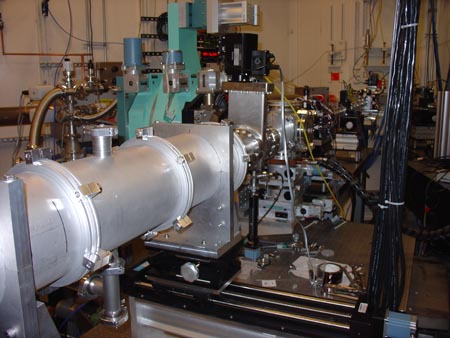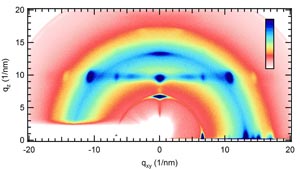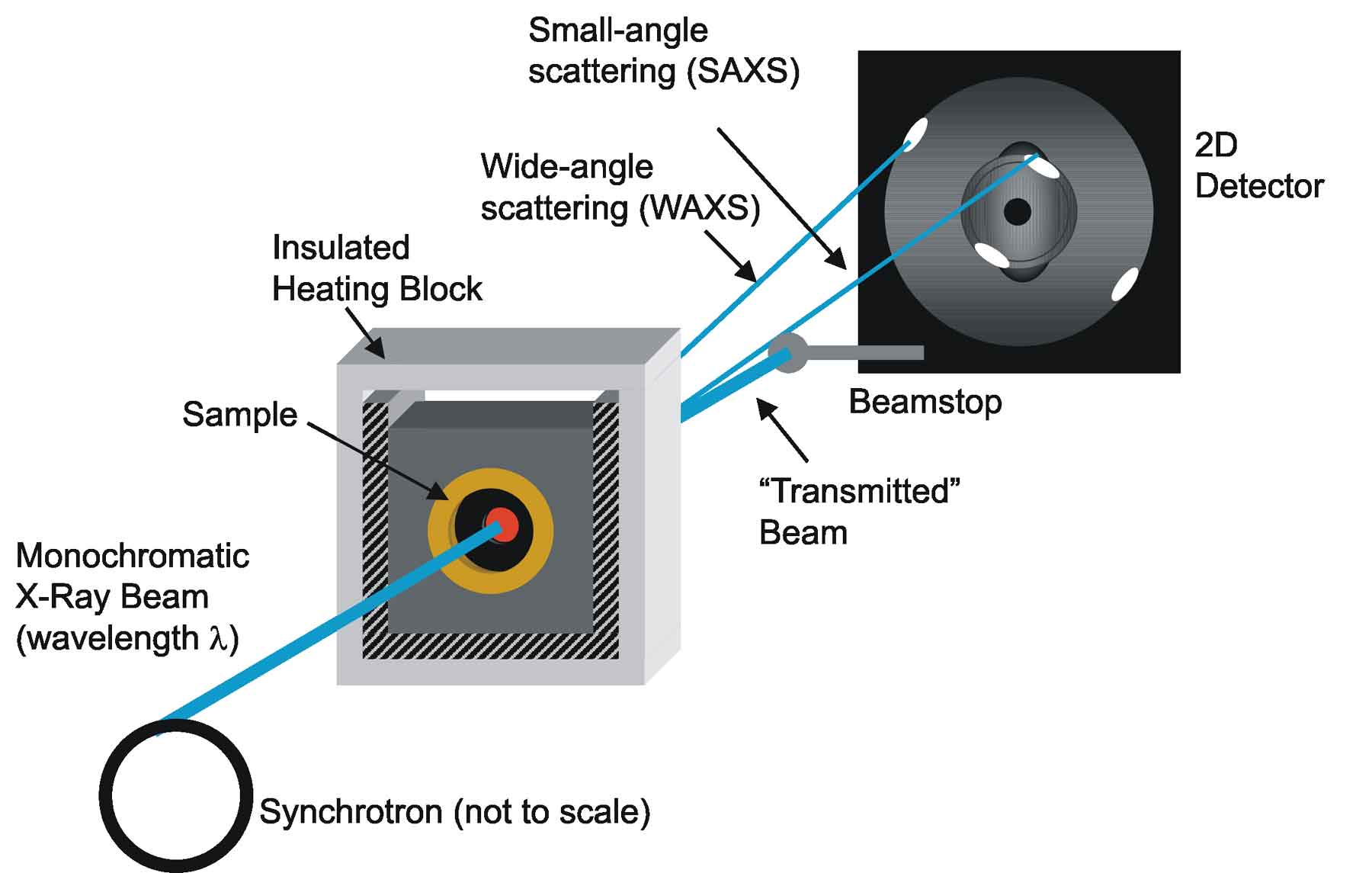

X-ray scattering beamline 8-ID-E of the Advanced Photon Source at Argonne National Lab (top). Grazing incidence x-ray diffraction from the crystallization of a rodlike polymer within a block copolymer nanostructure (right).
Scattering techniques are used to understand the size of nanoscale objects within our materials, to probe periodic structures that might form, and to investigate diffusion and relaxation dynamics. Radiation such as X-rays, neutrons, or light is scattered by interactions with the sample, and the observed scattering pattern is the interference between waves scattered from each atom within the sample. This interference pattern allows the structure of the sample to be inferred on length scales from angstroms (chemical bonds and crystalline structures) to 100s of nanometers (block copolymer and micelle sizes). Measuring energy loss or scattering time correlation functions also allows diffusion coefficients and relaxation modes to be measured on a wide variety of length and time scales.

Schematic of a small-angle X-ray scattering line at a synchrotron light source.
Our lab will make extensive use of techniques such as small-angle neutron scattering (SANS), small-angle X-ray scattering (SAXS), static light scattering (SLS), depolarized light scattering (DPLS), dynamic light scattering (DLS), X-ray diffraction (XRD), reflectivity, and grazing-incidence X-ray scattering (GISAXS) to understand nanoscale structure and dynamics in our samples. While some of these instruments are available on MIT's campus, many of them are located at national or international user facilities to which we apply for grants of user time. Conducting experiments at these facilities is an amazing scientific experience!
